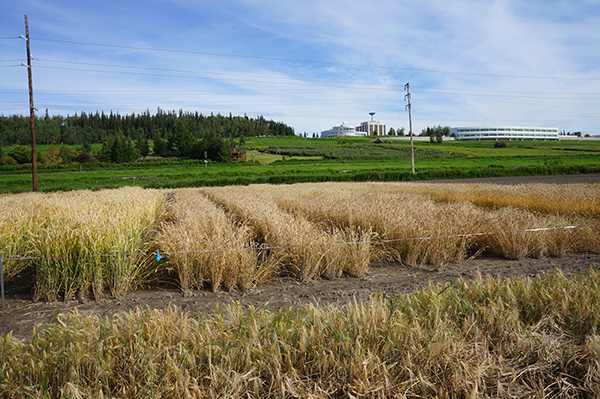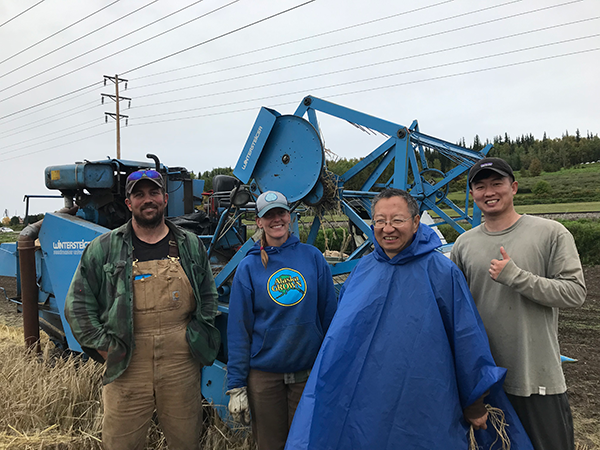Food security needs long-term research
UAF Agriculture and Forestry station researchers have been addressing food security in Alaska for more than a century, experimenting with various small grains, vegetables and fruits to see which do well in Alaska’s challenging climate, with the goal of easing Alaskans’ reliance on imported foods. Researchers at Alaska’s two experiment farms, one in Palmer and one in Fairbanks, have developed varieties of barley, wheat, sunflowers, potatoes and other vegetables that thrive in the far north. Other areas of study include invasive species, pesticide and herbicide persistence in cold soils and the effects of a changing climate on Alaska from an agricultural and natural resource perspective.
IANRE researchers study
- Forest Ecology
- GIS (Geographic Information System) Mapping
- Outdoor Recreation
- Small Grains Variety Development (wheat, barley)
- Peony/Cut Flower Cultivation
- Soil Fertility
- Composting
- Climate Change
- Public Land Management/Recreation
- Energy
- Greenhouse/High Tunnel Crop Production
- Food Policy
- Public Health
Research continues on finding the best early-maturing spring wheat variety. Zhang and and Van Veldhuizen have grown as many as 80 varieties of wheat each season.
The quest for a spring wheat variety that grows well in Alaska has been going on for more than 200 years, since Russians reportedly tried to grow wheat for bread flour for the Russian American Co. fur trading posts in the 1790s.
Trials continued at agricultural experiment stations in Sitka, Rampart and Palmer in the early 1900s, and several varieties were developed, including Ingal in 1981.
University of Alaska Fairbanks agronomist Mingchu Zhang is continuing the research with Bob Van Veldhuizen, a research assistant in agronomy and soils. Zhang believes that with Alaska’s warming climate, more opportunities may exist to find or develop a wheat variety that grows well in Alaska.
Zhang and and Van Veldhuizen have grown as many as 80 varieties of wheat each season, including the crosses, parent varieties of the crosses and 68 varieties Jones obtained from northern European countries, including Sweden, Finland, Norway, Denmark and Switzerland. All varieties were grown in a one-acre plot at the UAF Farm.
The process of selection, however, will take years. They expect to grow all varieties again next year and then select for the varieties that mature early, don’t shatter, have high yields and don’t fall down. The varieties will also be tested to determine nutritive value, baking quality and shelf life. Selections will continue for three to five years in Fairbanks.

Since Alaska does not have a plant breeder, Zhang and Van Veldhuizen are working with Washington State University wheat breeder Stephen Jones and several of his graduate students at the Mount Vernon Research Center.

Zhang believes that with Alaska’s warming climate, more opportunities may exist to find or develop a wheat variety that grows well in Alaska.

